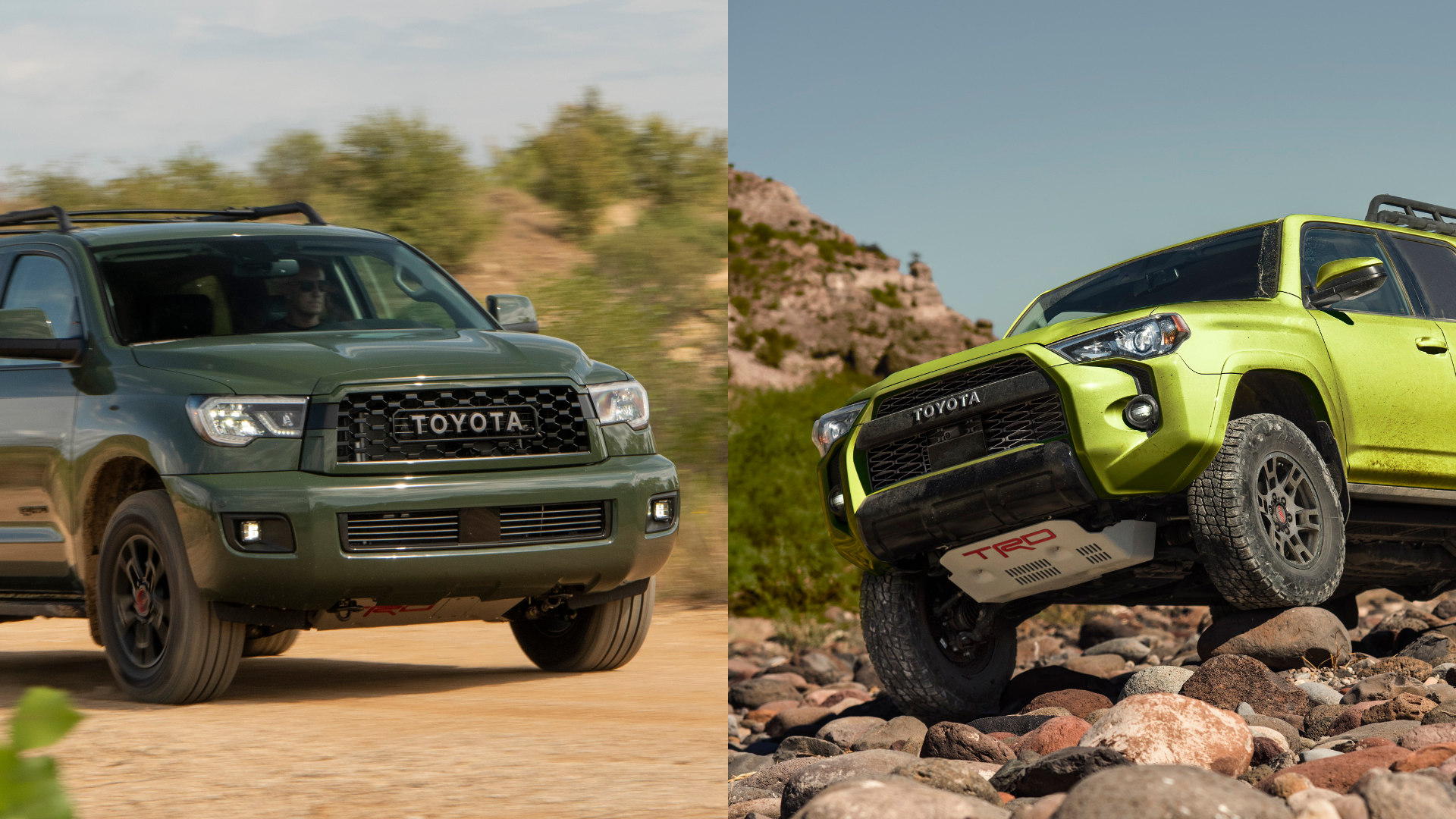The SUV market is beyond saturated, and that’s the biggest factor that makes it hard to choose an SUV in today’s market. Even when you can be dead set on a particular OEM like Toyota, you still have an overwhelming choice within that one brand, from compact crossovers to mid-size models and full-blown family and off-road SUVs.
How can you choose the best one? Today we’re looking at 2 of Toyota’s best-known larger and off-road-capable SUV models, the Toyota Sequoia, and the Toyota 4Runner. How do these large mainstays of the Toyota SUV range compare with one another?
Quick Summary
The Toyota Sequoia is a full-size SUV and currently Toyota’s largest SUV offering, whereas the 4Runner is a midsize SUV. The Sequoia features third-row seating and a bigger engine, but the 4Runner does still give you the option for a smaller third row. Both SUVs emphasize their off-roading capability, but the 4Runner’s dimensions are slightly more suitable for a 4×4.
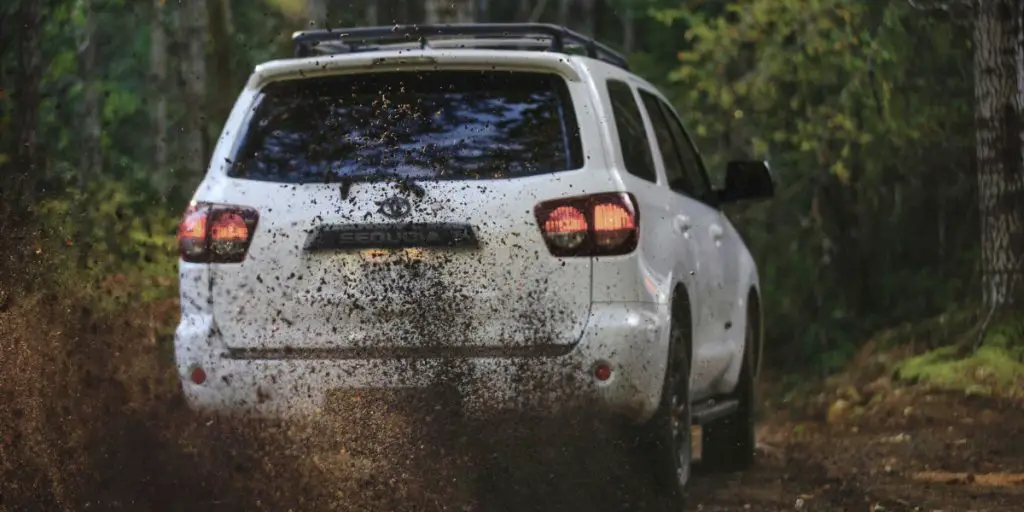
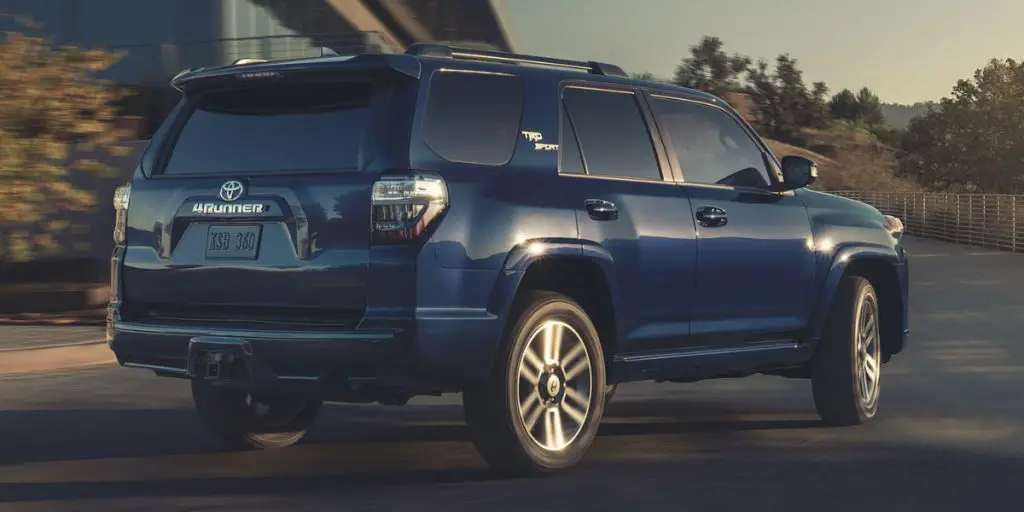
Pricing
The Toyota Sequoia is certainly senior when it comes to its price, with the latest model starting at $50,500. The Toyota 4Runner, on the other hand, starts at just $37,305. That’s the base level, at least.
At the higher end of the scale, the Sequoia climbs to $66,550 when you look to the Platinum trim level. The also high TRD Pro model comes in at $64,625 as a starting MSRP. The 4Runner also has a TRD Pro at the top end of the scale, which comes to $52,120, just a small amount over the baseline of the Sequoia.
Exterior and Interior Styling
Next, let’s take a look at styling. From the outset, the Sequoia is the larger of the two models, not that the 4Runner is a small model. The Sequoia has a much longer wheelbase at 122 inches compared to just 109.8 inches on the 4Runner. The Sequoia also has a larger, more imposing front-end design, and an extra 5 inches of height overall.
What the 4Runner doesn’t have in sheer size it makes up for in ruggedness. The 4Runner looks more like a natural off-road machine, though both are marketed as being very capable in this respect. Toyota even goes as far as to call the 4Runner “Captain of the off-road.” Unless they also want to say that the Sequoia is “Major of the off-road,” it’s clear which one appears more purpose-built for rugged riding.
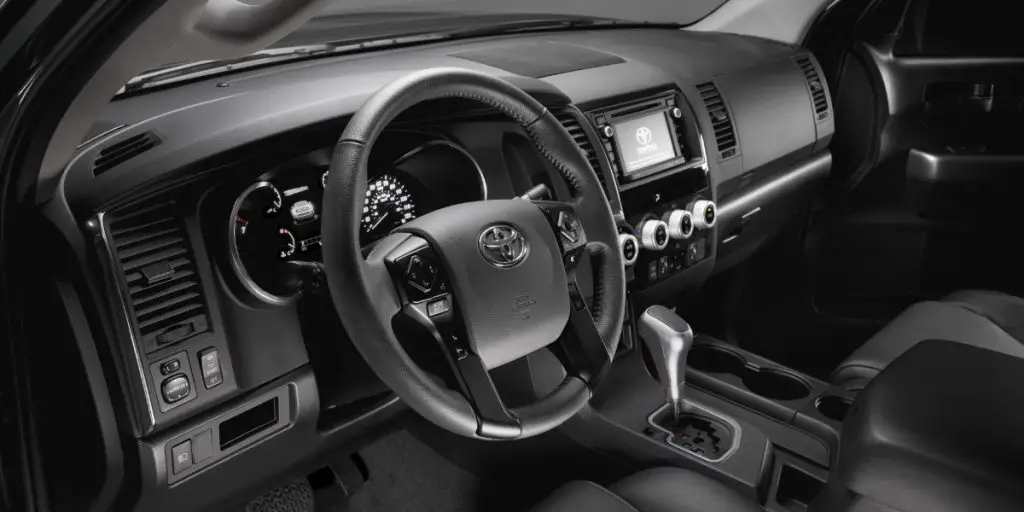
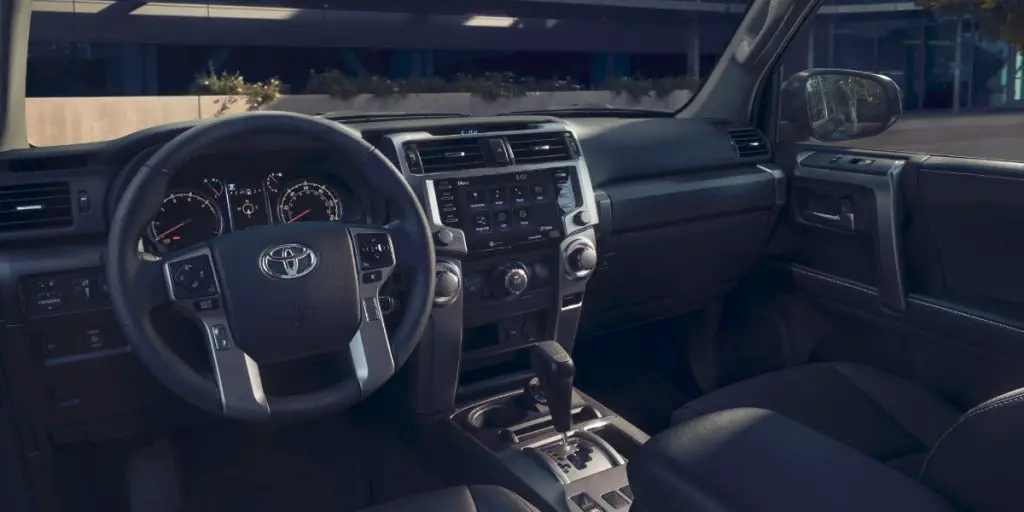
The interior of both models demonstrates the age of the models and the lack of serious updates from Toyota. Both the Sequoia and 4Runner feature fairly dated interiors which are a let down not so much for what they have, but for what they don’t. Since you pay less for the 4Runner, the lack of things like massaging seats and a driver HUD might not feel as surprising, but for a big-ticket item like the Sequoia, it’s lagging behind rivals like the GMC Yukon and Chevrolet Tahoe in this regard when you compare cost and features.
In this respect, the 4Runner delivers probably about what you’d expect for the budget, but the Sequoia under-delivers.
Performance
The Sequoia offers a huge V8 with 5.7L displacement and a maximum output of 381-hp. The transmission is a 6-speed automatic and the drivetrain is either RWD or 4WD. The 4Runner is equipped with a 4.0L V6 that gets up to 270-hp, paired with a 5-speed automatic and either RWD or FWD (part- and full-time).
Despite being that much larger, the bigger engine makes the difference and allows the Sequoia better acceleration and on-road performance, with a respectable 0-60 mph time of 6.4 seconds. The 4Runner is a lot more lackluster, covering the same speed gap in 7.6 seconds and generally being quite lethargic in its responses on the road.
In the off-road arena, however, the 4Runner’s ground clearance and excellent suspension make it a better ride on all kinds of rough terrain, including crawling over rocks. The superior and more responsive steering of the Sequoia makes it a better city and highway vehicle overall, but when it comes to crawling and sloughing through the real outdoors, the 4Runner has more to offer.
One more performance area key to these SUVs is also towing. The Sequoia offers a lot more maximum towing power at 7,400 lbs. The 4Runner is still fairly decent at 5,000 lbs but falls short overall.
Practicality
Clearly, both of these vehicles have a lot to offer in terms of utility and practicality. The Toyota 4Runner comes with up to 47.3 cubic feet of cargo space with the seats up, and up to 89.7 cubic feet with the flat-folding seats put down. The Sequoia doesn’t offer as much with the seats all up, but that’s because it has a third row, which we’ll come to soon. The Sequoia offers just 18.9 cubic feet with the seats up, but 120.1 cubic feet with all the seats down.
The Sequoia’s third seating row is a particular area of superiority compared to the 4Runner, the third seating row for which is optional. The Sequoia’s third row can comfortably seat adults on even long trips with no discomfort. The 4Runner’s third row, when installed, is really just for additional kids or small passengers only, and even then not on long trips.
The 4Runner does have an edge in fuel consumption, but despite their efficient Japanese DNA, these 2 SUVs would still fall under the “gas-guzzler” option for many, and neither have a hybrid option available. The 4Runner gets 16-mpg in the city and 19-mpg on the highway. The Sequoia manages 13-mpg and 17-mpg respectively. Neither is for those concerned about gasoline costs.
Technology & Features
Neither the Sequoia nor 4Runner have a lot of mind-blowing technology. Both offer touchscreens, the larger standard one being the 8-inch screen in the 4Runner. Both still heavily feature rotary knobs and physical buttons, which admittedly is something the fans of these SUVs do like in such a big cockpit. Both have the options for JBL premium sound systems and come standard with both Apple CarPlay and Android Auto.
The harder features of the 4Runner for off-roading are aided by technology, including Crawl Control mode, Toyota’s Kinetic Dynamic Suspension System (KDSS), and multi-terrain select drive modes. The Sequoia is also backed up with adaptive suspension and an automatic limited-slip differential.
Safety
Both models are equipped with the same standard Toyota Safety Sense system as standard, which includes: pre-collision system with pedestrian detection, dynamic radar cruise control, and lane departure alert, as well as automatic high beams.
Verdict
The two are both somewhat dated SUVs compared to many of their rivals, but they still have a good amount to offer the right audience. The Sequoia is more suited to the big family in need of comfortable, equitable seating for all, boundless cargo space and decent levels of comfort. The 4Runner is a better option for those who are serious about their off-road adventures. The Sequoia is fine off-road on the camping trail, but it’s no crawler.
Consider your primary needs and find the right large Toyota SUV to suit them.
Comparison Table
| 2022 Toyota Sequoia | 2022 Toyota 4Runner | |
|---|---|---|
| Trim | ||
| Price | $50500 | $37305 |
| Performance | ||
| Engine | 5.7L V8 Gas | 4.0L V6 Gas |
| Horsepower | 381 hp @ 5600 rpm | 270 hp @ 5600 rpm |
| Torque | 401 lb-ft @ 3600 rpm | 278 lb-ft @ 4400 rpm |
| Transmission | 6-Speed Automatic | 5-Speed Automatic |
| Drivetrain | Rear-Wheel Drive | Rear-Wheel Drive |
| Handling | ||
| Steering Type | Rack-Pinion | Rack-Pinion |
| Rear Wheel Size | P275/65TR18 | P265/70SR17 |
| Front Wheel Size | P275/65TR18 | P265/70SR17 |
| Turning Diameter (ft.) | 38.1 | 37.4 |
| Fuel Economy | ||
| MPG/MPGe - Hwy | 17 | 19 |
| MPG/MPGe - City | 13 | 16 |
| MPG/MPGe - Combined | 15 | 17 |
| Gas Tank Size (gallons) | 26.4 | 23.0 |
| Cruising Range - Hwy (miles) | 448.8 | 437.0 |
| Size and Weight | ||
| Height (in.) | 77.0 | 71.5 |
| Length (in.) | 205.1 | 190.2 |
| Weight (lbs) | 5730 | 4400 |
| Max Width (in.) | 79.9 | 75.8 |
| Wheelbase (in.) | 122.0 | 109.8 |
| Interior Dimensions | ||
| Seating Capacity | 8 | 5 |
| Front Seat Leg Room (in.) | 42.5 | 41.7 |
| Front Seat Head Room (in.) | 34.8 | 39.3 |
| Front Seat Hip Room (in.) | 62.5 | 56.5 |
| Front Seat Shoulder Room (in.) | 66.4 | 57.8 |
| Rear Seat Leg room (in.) | 40.9 | 32.9 |
| Rear Seat Head Room (in.) | 34.9 | 38.6 |
| Rear Seat Hip Room (in.) | 59.9 | 55.7 |
| Rear Seat Shoulder Room (in.) | 65.6 | 57.8 |
| Third Row Leg Room (in.) | 35.3 | - |
| Third Row Head Room (in.) | 34.5 | - |
| Third Row Hip Room (in.) | 50.4 | - |
| Third Row Shoulder Room (in.) | 65.7 | - |
| Infotainment Features | ||
| HD Radio | Standard | Not Available |
| MP3 Player | Standard | Standard |
| WiFi Hotspot | Standard | Standard |
| Satellite Radio | Standard | Standard |
| Bluetooth Connection | Standard | Standard |
| Entertainment System | Not Available | Not Available |
| Premium Sound System | Not Available | Not Available |
| Auxiliary Audio Input | Standard | Standard |
| Smart Device Integration | Standard | Standard |
| Hard Disk Drive Media Storage | Not Available | Not Available |
| Interior Trim | ||
| Cloth Seats | Standard | Standard |
| Vinyl Seats | Standard | Standard |
| Leather Seats | Standard | Standard |
| Premium Synthetic Seats | Standard | Standard |
| Bucket Seats | Standard | Standard |
| Sun/Moonroof | Standard | Not Available |
| Leather Steering Wheel | Not Available | Standard |
| Woodgrain Interior Trim | Not Available | Not Available |
| Comfort Features | ||
| A/C | Standard | Standard |
| Rear A/C | Standard | Not Available |
| Telematics | Standard | Standard |
| Seat Memory | Not Available | Not Available |
| Seat-Massage | Not Available | Not Available |
| Keyless Entry | Standard | Standard |
| Keyless Start | Standard | Standard |
| Cruise Control | Standard | Standard |
| Multi-Zone A/C | Standard | Not Available |
| Power Liftgate | Not Available | Not Available |
| Climate Control | Standard | Not Available |
| Head-Up Display | Not Available | Not Available |
| Power Mirror(s) | Standard | Standard |
| Automatic Parking | Not Available | Not Available |
| Navigation System | Optional | Optional |
| Power Driver Seat | Standard | Standard |
| Cooled Rear Seat(s) | Not Available | Not Available |
| Hands-Free Liftgate | Not Available | Not Available |
| Heated Rear Seat(s) | Not Available | Not Available |
| Remote Engine Start | Standard | Not Available |
| Cooled Front Seat(s) | Not Available | Not Available |
| Heated Front Seat(s) | Optional | Not Available |
| Power Passenger Seat | Optional | Not Available |
| Remote Trunk Release | Not Available | Not Available |
| Heated Steering Wheel | Not Available | Not Available |
| Adaptive Cruise Control | Standard | Standard |
| Navigation from Telematics | Not Available | Not Available |
| Universal Garage Door Opener | Optional | Not Available |
| Steering Wheel Audio Controls | Standard | Standard |
| Safety Features | ||
| ABS | Standard | Standard |
| Brake Assist | Standard | Standard |
| Night Vision | Not Available | Not Available |
| Rear Parking Aid | Standard | Not Available |
| Traction Control | Standard | Standard |
| Stability Control | Standard | Standard |
| Blind Spot Monitor | Standard | Not Available |
| Cross-Traffic Alert | Standard | Not Available |
| Lane Keeping Assist | Not Available | Not Available |
| Tire Pressure Monitor | Standard | Standard |
| Lane Departure Warning | Standard | Standard |
| Airbags | ||
| Knee Air Bag | Standard | Standard |
| Driver Air Bag | Standard | Standard |
| Seatbelt Air Bag | Not Available | Not Available |
| Passenger Air Bag | Standard | Standard |
| Rear Head Air Bag | Standard | Standard |
| Rear Side Air Bag | Not Available | Not Available |
| Front Head Air Bag | Standard | Standard |
| Front Side Air Bag | Standard | Standard |
| Warranty | ||
| Basic | 3 Years / 36,000 Miles | 3 Years / 36,000 Miles |
| Corrosion | 5 Years / Unlimited Miles | 5 Years / Unlimited Miles |
| Drivetrain | 5 Years / 60,000 Miles | 5 Years / 60,000 Miles |
| Maintenance | 2 Years / 25,000 Miles | 2 Years / 25,000 Miles |
| Roadside Assistance | 2 Years / 25,000 Miles | 2 Years / Unlimited Miles |
